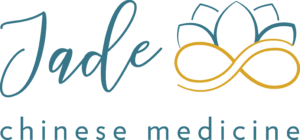Well it feels like Autumn has finally arrived: and so too have many of the other phenomena we come to expect around this time of year.
Autumn is often the time when colds and flu go around – but have you ever wondered why this is so? Autumn is the time to have quiet, to wind down, and to conserve energy before the cold (even in Brisbane) of Winter. In the same way Spring is naturally busier and more active, Autumn is a time to conserve, to withdraw, and to find balance between internal and external activities in life to find a more nourishing and balanced space.
In Eastern Medicine, Autumn is the season with an affinity with the lungs, with grief, and with descent – this can be either the emotional or physical kind, as with all things in Eastern Medicine, as the two are inseparable.
The lungs are considered a yin organ – which means they are both fundamental and essential for life, and also that they are deeply internal. Despite this, they are fragile and easily affected by external elements – after all, the lungs are the only organ exposed to air – to provide energy through oxygen and the other components of air we breathe, but also to filter pollution and other toxins. They balance dry and damp in the body. They nourish and protect us, but in turn they also need our care in order to be able to support us well.
The lungs also have a governing function over breath – its expansion and exhalation, expenditure and conservation. I consider the function of the Lungs to be a perfect analogy for the use of energy throughout this time. Choosing what and where has the focus of your time is a great way to nourish the energy of your lungs and avoid becoming unwell with the nasty colds coming around.
Living out of synchronicity and balance with the natural seasons of your body and environment is always a recipe for ill health – in autumn this typically manifests as symptoms affecting the lungs, such as colds and flu, immunity issues and exhaustion. As the weather becomes dryer, skin and hair issues may appear – this is also the time for recurrence of skin conditions you thought healed, or that lingering cold you have not been able to shake turning into bronchitis or pneumonia if you do not take time to recover.
Autumn is also a time of transition, of grief, and of letting things go. Its towards the end of the generating, natural cycle, when things die and reach completion, before new growth can occur in spring. As a metal element, the lungs can be either a representation of retention and holding onto something (say a bowl or a vase) but also the division to separate (like a knife). Both these functions are essential, but deciding which of these is appropriate can be hard. The time of autumn and the descending aspect of the lungs means that usually, this is a time when old things come back. Its a time when you think about experiences that have gone, about people you have lost, and often of endings.
The relationship between grief and the lungs is well known. Even in western medicine, a sense of grief is the single biggest predictor of compromised immunity. This is because of the fundamental mindbody duality of experience: our ‘body’ and our ‘experience’ are not separate but one and the same. In the same way you feel sad and unhappy with a cold, a feeling of sadness will deplete the energy of the lungs – and make you more susceptible to a cold. Its a cause and effect cycle without beginning or end.
Practices to nourish your lungs:
Listening to the energy of the lungs and autumn is an invitation to find balance. Decide on your priorities – life, work, personal – and don’t get caught in the hamster wheel of business.
Integrate a breath work practice. If you’ve been thinking some mediation or breathwork ‘should’ be something you do, now is a perfect time.
Eat warm foods, with plenty of broths, good quality protein, and green leafy vegetables. White foods in particular nourish the lungs so diakon, cauliflower, and garlic are your friends right now.
Photo by Johannes Plenio on Unsplash



